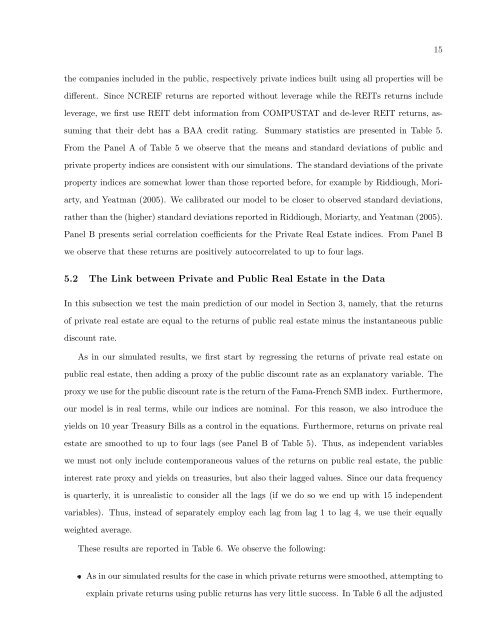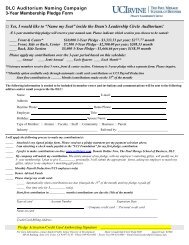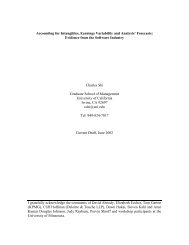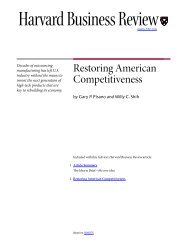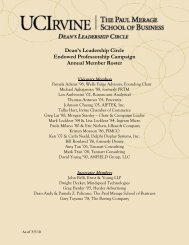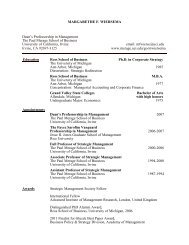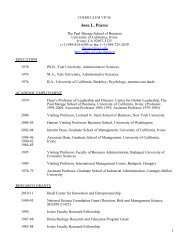View Carlson-Titman-Tiu Paper - The Paul Merage School of Business
View Carlson-Titman-Tiu Paper - The Paul Merage School of Business
View Carlson-Titman-Tiu Paper - The Paul Merage School of Business
You also want an ePaper? Increase the reach of your titles
YUMPU automatically turns print PDFs into web optimized ePapers that Google loves.
the companies included in the public, respectively private indices built using all properties will be<br />
different. Since NCREIF returns are reported without leverage while the REITs returns include<br />
leverage, we first use REIT debt information from COMPUSTAT and de-lever REIT returns, as-<br />
suming that their debt has a BAA credit rating. Summary statistics are presented in Table 5.<br />
From the Panel A <strong>of</strong> Table 5 we observe that the means and standard deviations <strong>of</strong> public and<br />
private property indices are consistent with our simulations. <strong>The</strong> standard deviations <strong>of</strong> the private<br />
property indices are somewhat lower than those reported before, for example by Riddiough, Mori-<br />
arty, and Yeatman (2005). We calibrated our model to be closer to observed standard deviations,<br />
rather than the (higher) standard deviations reported in Riddiough, Moriarty, and Yeatman (2005).<br />
Panel B presents serial correlation coefficients for the Private Real Estate indices. From Panel B<br />
we observe that these returns are positively autocorrelated to up to four lags.<br />
5.2 <strong>The</strong> Link between Private and Public Real Estate in the Data<br />
In this subsection we test the main prediction <strong>of</strong> our model in Section 3, namely, that the returns<br />
<strong>of</strong> private real estate are equal to the returns <strong>of</strong> public real estate minus the instantaneous public<br />
discount rate.<br />
As in our simulated results, we first start by regressing the returns <strong>of</strong> private real estate on<br />
public real estate, then adding a proxy <strong>of</strong> the public discount rate as an explanatory variable. <strong>The</strong><br />
proxy we use for the public discount rate is the return <strong>of</strong> the Fama-French SMB index. Furthermore,<br />
our model is in real terms, while our indices are nominal. For this reason, we also introduce the<br />
yields on 10 year Treasury Bills as a control in the equations. Furthermore, returns on private real<br />
estate are smoothed to up to four lags (see Panel B <strong>of</strong> Table 5). Thus, as independent variables<br />
we must not only include contemporaneous values <strong>of</strong> the returns on public real estate, the public<br />
interest rate proxy and yields on treasuries, but also their lagged values. Since our data frequency<br />
is quarterly, it is unrealistic to consider all the lags (if we do so we end up with 15 independent<br />
variables). Thus, instead <strong>of</strong> separately employ each lag from lag 1 to lag 4, we use their equally<br />
weighted average.<br />
<strong>The</strong>se results are reported in Table 6. We observe the following:<br />
As in our simulated results for the case in which private returns were smoothed, attempting to<br />
explain private returns using public returns has very little success. In Table 6 all the adjusted<br />
15


